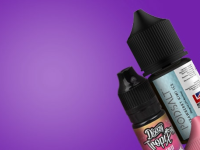What To Do When Your Food Photos Don’t Turn Out
Food photography can be a delightful yet challenging endeavor, and even seasoned photographers occasionally face the frustration of unsatisfactory images. Whether it’s poor lighting, unappealing compositions, or lacklustre colors, there are several strategies you can employ when your food photos don’t turn out as expected. Here’s a guide from the best food photographer in Dubai on how to address and rectify these common issues.
Evaluate and learn from mistakes:
When a photo doesn’t turn out well, take a moment to evaluate what went wrong. Was the lighting too harsh or too dim? Did the composition feel cluttered or unbalanced? Understanding the specific issues can help you learn and improve for future shoots. Keep a photography journal where you note down what worked and what didn’t, allowing you to track your progress and refine your technique.
Adjust the lighting:
Lighting is a key element in food photography. If your photos look dull or flat, consider changing your light source. Natural light is often the most flattering, so try shooting near a window during the golden hour for softer, warmer light. If you’re indoors with artificial lighting, experiment with different angles and intensities. You might also use diffusers to soften harsh light or reflectors to bounce light back onto your subject, creating a more balanced exposure.
Recompose the shot:
Sometimes, all it takes to salvage a poor photo is to rethink the composition. Try different angles and perspectives to see how they impact the visual appeal of the dish. A top-down flat lay might work better than a side shot, or vice versa. Don’t hesitate to move elements around or change the arrangement of your food to create a more vigorous and inviting scene. Sometimes, even slight adjustments can lead to dramatically improved results.
Experiment with editing:
Post-processing is a powerful tool in food photography. If your initial shot didn’t capture the colors or details as you envisioned, use photo editing software to improve the image. Adjust the exposure, contrast, and saturation to bring your food to life. Cropping can also help eliminate distracting elements and improve composition. Don’t be afraid to experiment with filters or presets that can give your images a fresh, appealing look.









